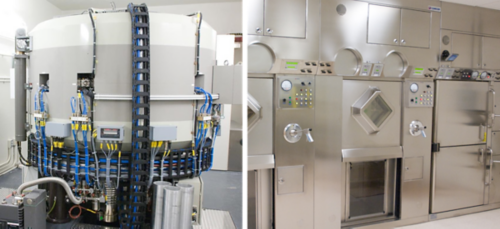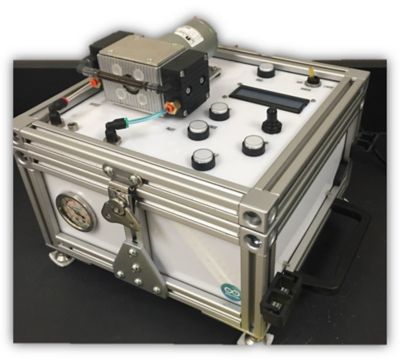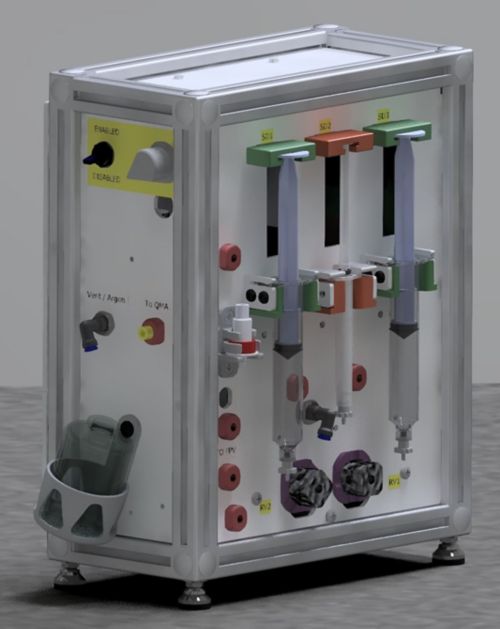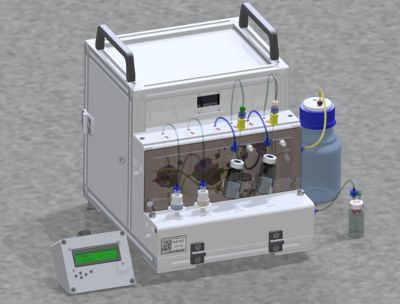St. Jude Family of Websites
Explore our cutting edge research, world-class patient care, career opportunities and more.
St. Jude Children's Research Hospital Home

- Fundraising
St. Jude Family of Websites
Explore our cutting edge research, world-class patient care, career opportunities and more.
St. Jude Children's Research Hospital Home

- Fundraising
Molecular Imaging Core
A collaborative resource for development and production of positron-emitting radiotracers for preclinical and patient research in PET imaging.
About the MIC
The mission of the Molecular Imaging Core is to enable St. Jude researchers and clinicians to non-invasively visualize biochemical processes and target expression using PET imaging without perturbing the natural environment. We produce positron-emitting radionuclides and incorporate them into an array of PET tracers using various radiochemical techniques and equipment to support preclinical and clinical research.
The MIC is a team of engineers, radiochemists, and pharmacists with expertise in the niche field of PET radiotracer production and quality control testing. We translate known tracers with established clinical use into production in our facility for clinical research protocols with our pediatric population. We also support projects to develop novel tracers by incorporating radiolabeled elements into compounds of interest to image biochemical processes. In total, we have roughly two dozen tracers available for research use and three approved INDs for clinical research tracers – [11C]methionine, [18F]fluorodopamine, and [18F]DPA-714 - with more in the pipeline.

-
Turn up the Radiochemistry: The Molecular Imaging Core
Scientists in the St. Jude Molecular Imaging Core race against time to produce PET radiotracers to diagnose illness and observe many biochemical processes.
READ THIS PROMISE MAGAZINE ARTICLE TO LEARN MORE >
Radiosynthesis and QC. Our IBA Cyclone 18/9 cyclotron is capable of producing large quantities of fluorine-18, carbon-11, nitrogen-13, and oxygen-15 with transfer lines connected to 8 shielded hot cells housing several radiosynthesizers. These include two PETChem Solutions systems (F-18 and C-11), three IBA Syntheras plus Extension, a Bioscan Autoloop, IBA HCN module, custom-made purification and reformulation modules, and an Eckert & Ziegler C-11 MeI system with Modular-Lab components. The lab also houses a Comecer shielded laminar flow hood and an Amercare PET Isolator and Automated Dose Dispensing robot for remote dose drawing.
The MIC is GMP compliant with USP Chapter <823> for clinical research production of PET radiotracers. Our QC equipment includes several HPLC systems including radioactivity detectors, a conductivity detector, Peltier cooling, and fraction collection capabilities as well as gas chromatography systems, a TLC radioactivity scanner, a multi-channel analyzer for radionuclidic purity, and other supporting analysis equipment.
Custom Engineering. The engineers in the MIC support tracer implementation with an array of synthesis apparatus and software designed and constructed in-house to support and streamline the radiochemistry performed remotely behind lead-shielded chemistry hoods and workspaces.



Leadership
Amy Vavere, PhD
Amy Vavere received her Bachelor’s in Chemistry (Biochemistry Concentration) from Drake University in Des Moines, Iowa and her PhD in Inorganic Chemistry from Washington University in St. Louis. Her thesis work in PET radiochemistry explored the biological mechanisms of titanium anti-cancer drugs utilizing titanium-45. As an NIH postdoctoral scholar at Washington University School of Medicine, she studied the effects of prostate cancer treatments with several clinically-relevant tracers. This work demonstrated correlations between fatty acid synthase expression and [11C]acetate uptake as well as [64Cu]ATSM hypoxia selectivity in prostate cancers. Upon the installation of the cyclotron in 2007, Amy joined St. Jude as Head Radiochemist to support a new molecular imaging research group focused on clinical research for the pediatric cancer population. When the facility was reorganized as a DI-based institutional center in 2018, she was appointed Director of the Molecular Imaging Core.
Staff

- Joana Marie Almazan
- Lead Researcher

- Victor Amador Diaz
- Senior Cyclotron Engineer

- Melissa Brown, PharmD
- Nuclear Pharmacist

- Allison Clay
- Senior Researcher

- Arijit Ghosh
- Scientist

- Cody Thompson
- Cyclotron Engineer

Memphis, TN, 38105-3678 USA GET DIRECTIONS
